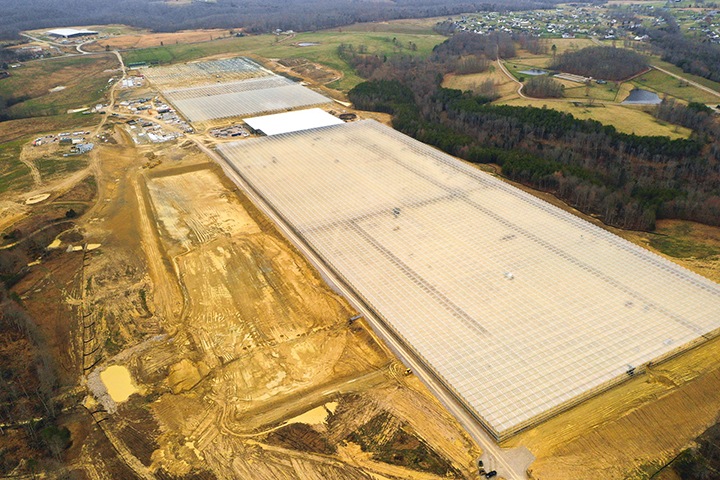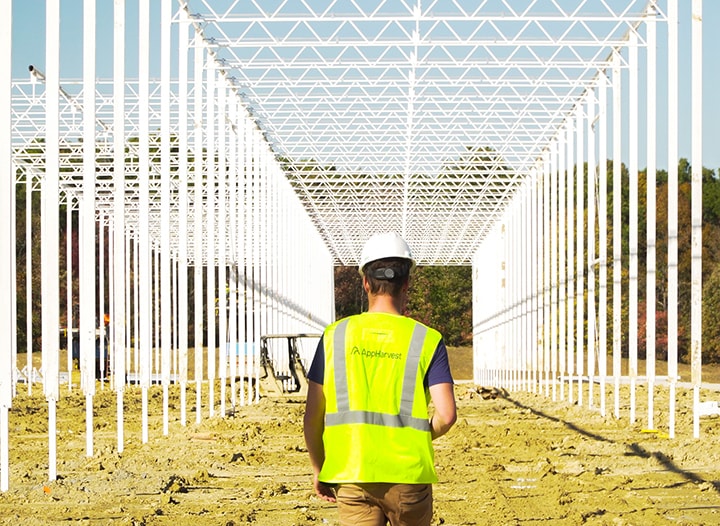

The new AppHarvest greenhouse is being fitted with a hybrid horticulture lighting solution, which combines the new Philips GreenPower LED toplighting compact from Signify, and traditional greenhouse high pressure sodium lighting.
AppHarvest will plant their first crop of tomatoes in late summer, with the official ribbon cutting currently scheduled for October.
Inspired by leaders in sustainable agriculture
Jonathan Webb, founder and CEO of AppHarvest, looked to the Netherlands for agricultural ideas. “We are using the ecosystem we see in the Netherlands,” Webb said in a recent interview. “[That country is] a world leader in agriculture and bringing those ideas to Eastern Kentucky made sense. We wanted to take proven technologies and deploy them at scale.”
“This is a great place to build a large indoor produce hub and retool our food system in America. We can get to 70% of the United States in a day’s drive.” Webb estimated that this would reduce diesel fuel consumption 80-90% compared to traditional trucking routes.

The AppHarvest facility will comprise of two 30-acre greenhouses and a central packing and distribution warehouse. It is expected to employ more than 275 people and ship 45 million pounds of fresh produce annually.
Partnership of prominent agriculture companies
AppHarvest is partnering with Equilibrium, a leading greenhouse investment firm. Dalsem Complete Greenhouse Projects, which is overseeing construction of the greenhouse, will install the LED toplighting grow lights.

“We’re very excited about our collaboration with AppHarvest and Equilibrium,” said Bill Bien, CEO of Signify Agriculture Lighting. “It’s great to work with partners just as committed to sustainable horticulture as we are, and we’re looking forward to helping them increase growth predictability, crop quality and yields, while improving their energy efficiency.”
Supplementing natural light with Philips LED technology
Philips horticulture LEDs deliver a light spectrum that is specifically tailored to optimize plant growth. Philips horticulture LEDs provide up to 40% more energy-efficient lighting compared to traditional greenhouse lighting, and emit considerably less radiant heat. Low heat radiation allows growers to separately manage two important crop inputs – heat and light – enabling complete control of the greenhouse climate.


November 14, 2023
How lighting technology can help reduce risks to migrating birds